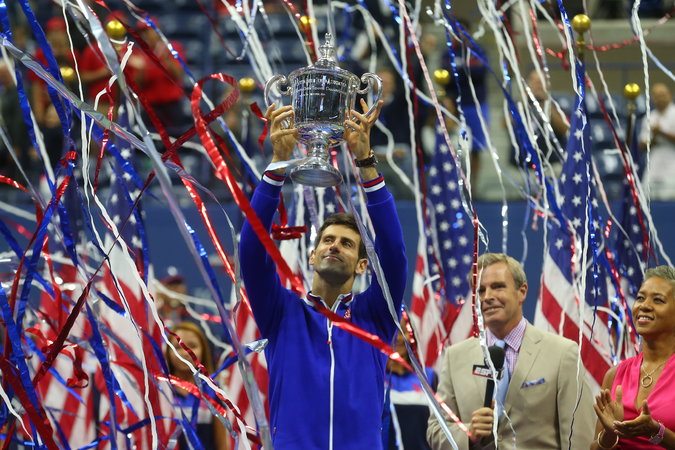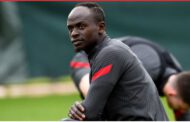Once again, Novak Djokovic was the antidote to Roger Federer on a roll.
After stopping Federer in this year’s Wimbledon final, Djokovic did the same on Sunday in the United States Open final, prevailing despite a hostile crowd at Arthur Ashe Stadium and underscoring his status as the world’s No. 1 player.
Djokovic’s 6-4, 5-7, 6-4, 6-4 victory gave him a second U.S. Open singles title and a 10th Grand Slam singles title, moving him into a tie with Bill Tilden for seventh place on the career list.
Federer remains on top of that pecking order with 17, but Djokovic has prevented him from adding to his record total.
He is playing remarkable tennis at age 34, but Djokovic, at 28, is in his prime and remains one of the great tennis conundrums for any opponent with his tactical versatility and peerless defensive skills.
Federer has fared much better than most, and their rivalry is the best the men’s game has to offer at the moment with Rafael Nadal in a slump.
They have played 42 times, and Djokovic’s victory on Sunday tied the series, 21-21.

It is a contrast in styles, even more so now that Federer has recommitted to the attack under his co-coach Stefan Edberg, the former Wimbledon and U.S. Open champion who was a net-rushing marvel at his peak.
But Djokovic is hardly just a defender. He takes plenty of risks of his own and is particularly adept at transforming seeming vulnerability into offense when extended into the corners of the court.
Hardcourts have traditionally been his best canvas, suiting his movement and precise footwork best. But U.S. Open finals have been more stumbling blocks than showcases for Djokovic. He had lost four of the five in which he had played until Sunday.

This victory did not come easily. First, it was a waiting game with the final delayed more than three hours by rain.
When it began, it became apparent that Djokovic would be playing on the road, with the sellout crowd at Ashe Stadium giving Federer nothing but positive reinforcement and greeting Djokovic’s winners with polite applause at best.
After breaking Federer in the third game, Djokovic lost his balance while changing direction in the next game and fell hard to the blue court, scraping his right forearm and looking a bit dazed for the next three points as Federer succeeded in breaking back.But Djokovic has become as tough to break down mentally as he is tough to break down in a baseline rally. And with Federer’s first-serve percentage stuck below 50 percent, Djokovic won the opening set.
Federer found his form in the second, but as at Wimbledon, he was unable to sustain that drive, even with the crowd fully behind him, cheering for Djokovic’s missed first serves and other errors.
Federer’s final chance to extend the match came in the fourth set, when he cut Djokovic’s two-break advantage from 5-2 to 5-4 and then had three break point opportunities on Djokovic’s serve to get back to 5-5.But Djokovic saved them all and was soon celebrating in the players’ box with his friends and family members, whose cheers had been drowned out for most of the night but who ended up cheering the loudest as Federer, who converted just four of 23 break points in the match, glumly sat in his chair.
Djokovic’s victory made his season one of the finest in tennis history: even better in Grand Slam terms than his remarkable 2011 season, when he won three of the major singles titles and lost in the semifinals of the French Opento Federer.
This year, he joined Federer and Rod Laver as the only men in the Open era to reach all four major finals, his only defeat coming in the final of the French Open against Stan Wawrinka, Federer’s inspired Swiss compatriot.
Federer was clearly inspired himself on this summer hardcourt swing: winning in Mason, Ohio, and reaching the U.S. Open final without losing a set. But beating Djokovic over a best-of-five-set match is still the biggest challenge in men’s tennis, and Federer, for all his tennis genius, has not managed it since the Wimbledon semifinals in 2012.














